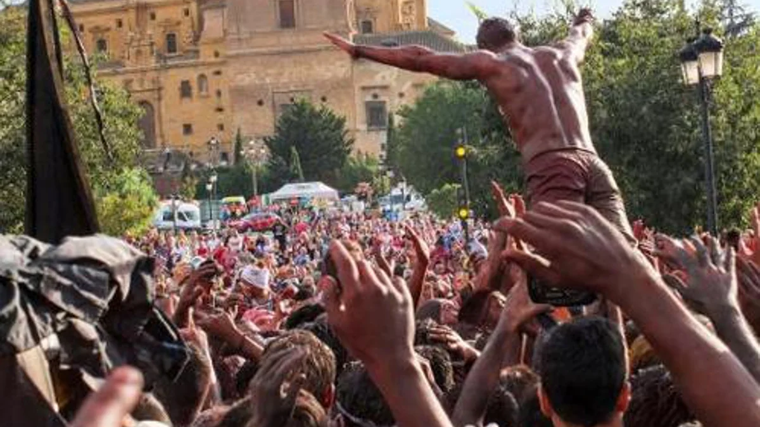Cascamorras: the multitudinous Andalusian festival that fights to protect a virgin

Tradition, religiousness, and, above all, a desire to have a good time. This is what those who attend the Cascamorras festival, held each year in the Granada towns of Baza and Guadix , expect. And almost everyone gets it, because having fun is easy there. And having a great time, too.
But let's start with the serious stuff: in 1151, the Almohads, who ruled those two regions, destroyed a Mozarabic hermitage on the outskirts of Baza, in a place known as La Churra. Three centuries later, when the Muslims were displaced by the Christians, a church was built there in honor of the Virgin of Pilar .
Working on that reconstruction was a mason from Guadix named Juan Pedernal , who, it is said, at one point heard a voice saying, "Have mercy." He approached the place where it came from and found the statue of a Virgin, which for obvious reasons was called the Virgin of Mercy. If it had been asking for help, it would have been called Socorro, but it's best not to go into that.
The fact is that Juan Pedernal wanted to take her to Baza, mainly because he was the one who found her. But they didn't let him. The bricklayer wasn't satisfied; he wanted to take the Virgin, and days later he returned with a character dressed as a jester , like a harlequin. That's Cascamorras.
But he couldn't do it either, and both he and the harlequin returned to Guadix, where they lived, covered in tar. As has been passed down ever since, generation after generation, they told him as he left that if he ever managed to take the image without getting stained , he could keep it.
 Upon his return to Guadix, Cascamorras is acclaimed... but also covered in paint.
abc
Upon his return to Guadix, Cascamorras is acclaimed... but also covered in paint.
abc
That's where the tradition begins. Every year, a character dressed as the Cascamorras comes from Guadix to Baza to try to steal the Virgin, but everyone is already warned of his arrival and awaits him with cans and cans of paint. Covered from head to toe, he has to return to his village, where they also throw paint at him to reproach him for not achieving his goal.
Now, that paint isn't toxic, so there's no problem there. It's a good idea to wear comfortable clothing that can be thrown away without hesitation, because it's more than likely that attendees will get splashed. Or rather, they'll end up soaked. This is Cascamorras, a festival of International Tourist Interest , a candidate for UNESCO's Intangible Heritage designation, which attracts thousands of people each year. Saying 50,000 isn't an exaggeration. It begins this Saturday, September 6, in Baza, and ends next Tuesday, September 9, in Guadix.
The Cascamorras represents a clown, as has been said, but performing him every year means a lot to the people of Guadix, as the people of Guadix are called. Being chosen as Cascamorras is a privilege . And to be frank, in the city, after returning without the Virgin and taking a second helping of paint, it's also true that they pay him the homage he deserves. In Baza, far from being the enemy, they also have a tremendous affection for him, and there is a statue in his honor.
For Baza, the arrival of the Cascamorras, scheduled for six in the evening, marks the start of the local festivities, which will continue until the 15th. After the harlequin's race, and here comes the religious part, there is a mass at eight in the evening in the church of La Merced . In Guadix, which held its festivities at the end of August, there is also revelry on September 9, when its local hero returns, but afterwards a religious service is held in the church of San Miguel .
ABC.es





